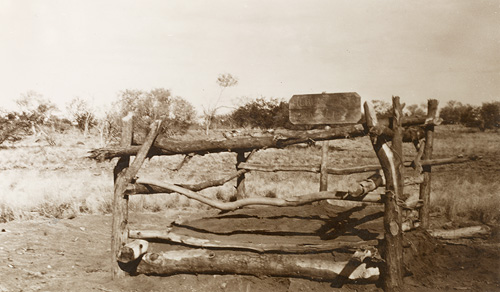The second expedition
A second expedition was coordinated by the CAGE Company in 1931 to determine whether Lasseter had indeed pegged his reef, as he had written in his diary. On this second expedition, West Australian government geologists Henry Talbot and Torrington Blatchford were among the party that travelled to the area that Lasseter had spoken of.
In John Bailey’s account, he states that these “skilled members of the Second Expedition cannot be passed over without comment. The best mining experts of West Australian Government reported that the country was not gold-bearing.”
[Map annotated by member of the second expedition], Central Australian Gold Exploration Company Ltd. Documents connected with the expedition in search of Lasseter's reef, 1930-32
Manuscript, A3043
Had Lasseter been influenced by popular novels of the time about fabled gold deposits in Central Australia? His adoption of the name Harold Bell may have been influenced by reading Harold Bell Wright’s novel, The Mine with the iron door (1923) a popular contemporary novel about fabulous gold finds in the outback.
Was he hallucinating, desperate for money or telling the truth? Many who met Lasseter have commented that he was full of stories. Blakely, looking back on the man in Dream Millions, said that he did not have a credible story about anything in all his reminiscences. Another said that “he was not a stickler for exactitude.”
The mythical reef remained a tantalising lure for many decades to come, particularly after the publication of Ion Idriess’ book, Lasseter’s last ride: an epic of Central Australian Gold Discovery which turned Lasseter into an Australian legend and hero. Expeditions to Central Australia contined into the 1970s as optimistic prospectors attempted to locate Lasseter’s reef without success.
Lasseter's grave, Central Australia from John Bailey collection of photographs showing Bob Buck leading the expedition to recover Lasseter's body in Central Australia, ca. 1930-31
Photograph, PXA 631/18
